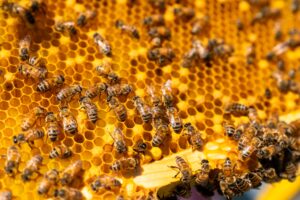When you’re planning a meal that’s good for your health, what sorts of things do you think about?
The calorie count? Vegetable content? No saturated fats? Sugar-free?
There are so many things to think about that salt rarely crosses our minds.
But salt can have a huge impact on our long-term health. And we might be eating far more of it than we realise.
Salty as the sea
One of the reasons we may not think about salt is because it’s unlikely anyone is pouring half a shaker’s worth of salt into their spag bol. In fact, the salt shaker may be the least of our worries.
When we’re cooking, we might only season with a pinch of salt or maybe not add any at all. But what we don’t see is the salt concealed in the sauces and condiments we use.
Cooking sauces, salad dressings, dips, crackers and processed meats can all be chock-full of salt. The Heart Foundation found that some of the crackers and dips on supermarket shelves were even saltier than seawater.
Ready-meals are some of the worst offenders. Some contain an entire day’s maximum salt intake in just one serve!
Even healthy foods contain a little bit of salt. Foods that are part of a healthy diet like bread, cheese, lean meat and even fruit and veg contain a little bit of salt. So we don’t really need to add any more salt to our food.
But since many of us have been unknowingly consuming huge quantities of salt through processed foods, it can be a hard habit to kick. When you’re used to eating such salty foods on a daily basis, your palate can become accustomed to it. Things may taste wrong when you first try to cut down.
If you wean off gradually, you can train your taste buds not to miss the salty stuff. And if you do, your heart might thank you in the long run.
Hearts under a-salt
When I was younger, because of my potato chip addiction, I used to joke that I would eventually die of a salt-induced heart attack.
The older I get, the less funny that joke becomes. It’s starting to feel a little too real.
Those tasty crispy discs really might be the key to my demise, with more and more research linking heart failure to excessive salt consumption. Even the World Health Organization is recommending we cut back.
Too much salt causes your blood pressure to rise. High blood pressure puts us at higher risk of a heart attack.
And it doesn’t just hurt your heart. Excessive salt consumption can cause damage to the kidneys and the arteries leading to the brain, and it can put you at a higher risk of developing stomach cancer.
But what can we do when salt seems to be in everything?
Read the label
Just by being aware of the amount of salt you’re eating, you can start to make more health-conscious decisions.
When you’re in the supermarket, take a look at the nutritional information panel on the products you’re buying.
If you want to know how much salt’s in the product, look at the sodium. It’s best to look at the amount of sodium per 100g to ensure all food is being compared the same.
With sodium, you want to see less than 120mg per 100g. Between 120mg and 400mg is OK sometimes, but if it’s more than 400mg, you should steer clear.

Once you get in the habit of reading labels, you’ll naturally start making better—and less salty—choices.
Start from scratch
Of course, you can’t omit salt from your diet entirely, and you wouldn’t want to. Your body needs some salt to function.
But you can cut down by reducing the amount of processed food you eat. Making your own sauces, dips and meals from scratch is going to drastically reduce the amount of salt in them.
“That’s too much work!” I hear you cry. Never fear. LiveLighter helped me put together some quick and healthy cooking tips earlier this year.
You can find more information, as well as healthy recipe substitutes, on the LiveLighter website.
Salt aside, reading labels, avoiding processed foods and cooking from scratch are going to improve your health in so many ways.
And it would be nice not to go out on a salt-induced heart attack as well!









